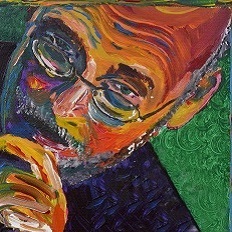Hospitalist encounters of the third kind
A first-year medical student reflects on a week of hospital medicine.
Medical students at the Mayo Clinic Alix School of Medicine get to choose one-week “selectives” in which they shadow the specialty of their choice. Six weeks after starting medical school, I chose to follow a hospitalist because I enjoy mulling over things and working through puzzles, and from the outside looking in, hospital IM seemed to involve a lot of puzzle-solving and diagnostics.

Also, like many medical students, I'll reluctantly admit that I enjoyed watching “House, M.D.” in my high school and college days (I know the show isn't realistic, but I'm not going to pretend it wasn't a factor in my decision). When I signed up for this shadowing selective, I thought we would be admitting at least half a dozen patients every day and then progressing through examinations, tests, and differential diagnoses. I expected the atmosphere to be intense with complex patients and adversarial rounds, punctuated with life-saving code blues.
Despite a constant lack of chest compressions and diagnostic dilemmas, rounding was very interesting. I had to ask a lot of questions just to follow what was happening. Every case presentation was packed with information and raised more questions than I had time to ask.
My comprehension typically went something like this: “Mrs. Smith was diagnosed with disease A two days ago (What's disease A?), her morning lab values were XYZ (Are these values low or high?) so we've started 100 mg of medication B (OK, I know what B is) and taken her off medication C (Wait, why?), and we've also decided to monitor D (How does D relate to A, B, or C?).”
Fortunately, the attendings and residents were very gracious in explaining things. I could only wonder how a patient might feel listening to this foreign language.
Some of my experiences were very amusing. One elderly patient struck up a conversation with me as I was examining her and asked me to guess how old she was. I was not sure how to answer, so I asked her to guess my age instead. She looked at me for a while (my face is covered with a mask and I'm in a suit) and guessed “41.” I'm 21. Maybe my eyes look older due to the existential stress of being a med student with too-dry contacts.
Most of the patient interactions were more serious. The toughest was listening to an end-of-life discussion between a physician and the family of a young woman with an incurable and rapidly progressive disease. She wasn't much older than I am. It was a somber memory I will not forget.
After an incredible week, I'm glad I chose hospital IM as my first medical school shadowing experience. I highly recommend it. I saw a wider variety of cases than I expected, a few of them related to topics we had just learned about in class. The behind-the-scenes view of hospital care coordination was also enlightening. There was less admitting and diagnosing than I anticipated (we averaged one or two new admissions each day), but that allowed clinicians to spend as much time as they wanted with each patient, which I really liked. I don't enjoy feeling rushed.
Throughout the week I kept asking myself, “Could I do this every day for the rest of my life?” Overall, I'd say yes. I definitely need more medical knowledge to better appreciate the thought processes behind medical management and a hospitalist's responsibilities, but hey, that's what med school and residency are for!
P.S. from the followed hospitalist: Seeing a very fresh student round is a true joy. And maybe the seed is planted, and he will be the hospitalist taking care of me in my senescence, seven years from now!



